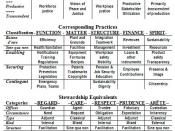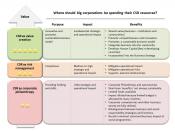�PAGE � �PAGE �13�
M231 Consumer Behaviour Reports 2007/8
Name:
Weighting Marks %
Literature on the chosen topic in consumer behaviour /30
Methodology for the investigation
Research instrument being used /20
Data analysis and Findings /25
Conclusions recommendations including presentation /25
Referencing and / or Bibliography
Total â¦â¦â¦. /100
Comments
Contents
1. Introduction 4
2. Literature Review 4
2.1 Company Background 4
2.2 Corporate Social Responsibility 5
2.3 Attitude theory 5
2.4 Balance Theory 7
2.5 Demographics 7
3. Methodology 8
3.1 Hypotheses and Variables 8
3.2 Sample 8
3.3 Framework 9
3.4 Measure 10
3.5 Questionnaire Distribution and Sampling Design 10
4. Data Analysis 10
5. Results 13
6. Conclusions and Recommendations 13
7. Appendix 14
8. References 29
Appendix
Appendix1: Questionnaires 14
Appendix2: Characteristic of Sample 17
Appendix3: Distribution of overall attitude scores 17
Appendix4: Factor analysis and reliability for overall attitude scores 18
Appendix5: Independent-sample t-test results 19
Appendix6: One-way ANOVA results 19
Appendix7: Characteristic of Sample (Further Analysis) 21
Appendix8: Independent-sample t-test results (Further Analysis) 23
Appendix9: One-way ANOVA results (Further Analysis) 24
Figures
1. Carroll's four-part model of corporate social responsibility 5
2. Dimensions of attitude 6
3. Balance Theory 7
4. Conceptual Framework 10
Equations
1. Fishbein Model 6
Tables
1. Analysis of variance of overall attitude scores for demographics 11
2. Analysis of variance of overall attitude scores for
demographics within groups of current and non-current customers 12
1. Introduction
It has long been acknowledged that social responsibility is an important duty of businesses (McGuire, et al.,
1988). As a result, consumers have been more concerned about environmental and ethical issues in their consumptions; they are using their spending power to make a different (Irving, et. at., 2002). Consequently it is important for company to develop sustainable social and environmental strategies as an...


